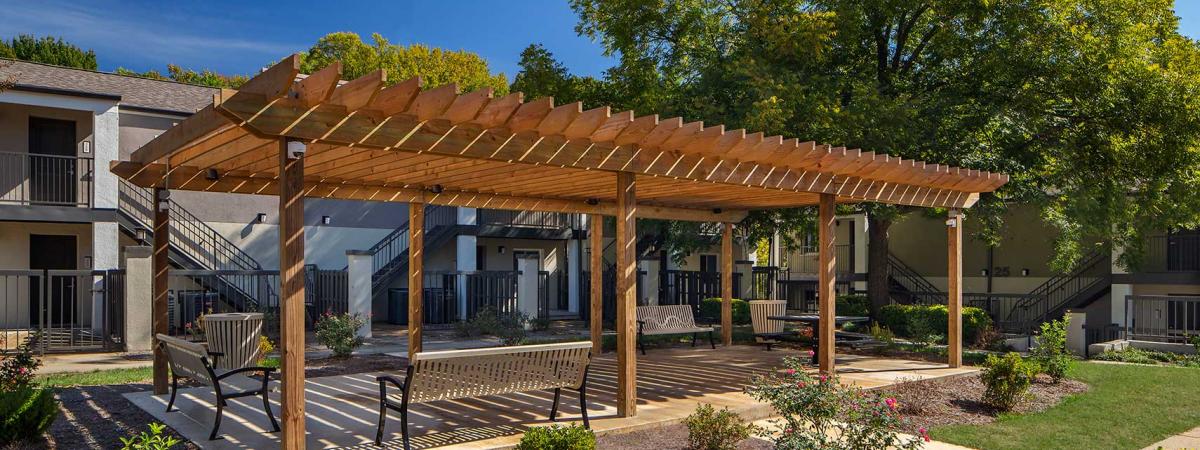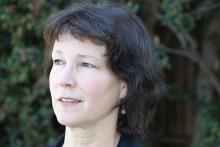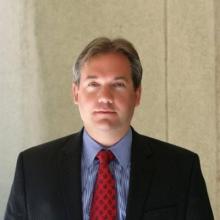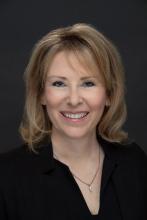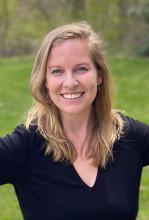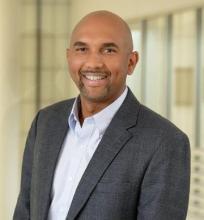What is Needed Beyond Mixed-Income Housing?
These essays explore how the mixed-income field is moving toward increasingly comprehensive, holistic place-making and neighborhood development, with an emphasis on amenities, resources, and services that generate well-functioning mixed-income, mixed-use communities. Questions to be considered include: Beyond housing, what other community features, such as early care and education, health and wellness, design and environmental sustainability, and social inclusion and cohesion need to be considered when designing and developing mixed-income efforts? How might mixed-income strategies be designed and implemented more holistically?
The Essays
- Recognizing and Incentivizing Mixed-Income Communities Designed for Health
- Ten Urban Design Strategies for Fostering Equity and Inclusion in Mixed-Income Neighborhoods
- Mixed-Income Communities Need Mixed-Income Early Care and Education
- Promising Practices to Promote Inclusive Social Dynamics in Mixed-Income Communities
Comprehensive Approaches to Mixed-Income Communities
These three essays expand our understanding of the trends within urban design that help to create inclusive, equitable mixed-income communities. They also bring to light a core challenge in the field: how to use design strategies to enhance the health and wellbeing of the demographically diverse array of residents who live in these communities. Each essay offers practical ideas for how to design and advance inclusion and equity within mixed-income neighborhoods.
In “Ten Urban Design Strategies for Fostering Equity and Inclusion in Mixed-Income Neighborhoods,” Emily Talen of the University of Chicago describes how the design of urban neighborhoods has been used in the past to demarcate differences in populations based on race, income, and other identities. Rather than feed into this historical trend, she recommends 10 design strategies that highlight the potential for mixed-income neighborhoods to support and sustain diverse populations. She argues that “residents of diverse neighborhoods…are being enlisted as active participants in a broader societal objective that seeks equity and inclusion in our neighborhoods —the opposite of what the American pattern of settlement has usually been about.” Urban planners, developers, architects and others will benefit from incorporating her design strategies as they consider changes in the built environment.
In “Recognizing and Incentivizing Mixed-Income Communities Designed for Health,” Sara Karerat and Lisa Creighton from the Center for Active Design explore strategies that have long-term implications for the health outcomes of individuals and communities. They describe innovations that provide the evidence-based guidance necessary for developers, building managers, and building owners to design housing that supports, rather than detracts from, resident health: the Fitwel ® Certification System and the Healthy Housing Rewards™ financial incentive program. The authors argue that these certification systems should be incorporated into housing for people of all income levels. Karerat and Creighton’s essay is especially timely given the global pandemic; as they write, “In the face of rising chronic disease rates and intensifying economic disparities—deeply aggravated in 2019-20 by the COVID-19 pandemic—this is a crucial time to prioritize health through health-promoting, mixed-income communities.”
In “Mixed-Income Communities Need Mixed-Income Early Care and Education,” Matthew Tinsley and Mary Ann Dewan from the Santa Clara County Office of Education in Northern California make the case for greater attention to the value of including early care and education as part of the design of and investment in mixed-income communities. They suggest that a focus on programs and services for children 0-5 years of age and their families may be an effective strategy to advance the goals of mixed-income community development projects, especially when complemented by school improvement efforts. They review the evidence for the impact of early care and education on low-income children and their mothers, as well as on middle-income children who receive care in mixed-income early care settings. They spotlight existing policies and practices that promote child care programs in mixed-income communities and provide specific examples of mixed-income developments that have set aside units designed specifically for family childcare home provider businesses.
Recognizing and Incentivizing Mixed-Income Communities Designed for Health
- Sara Karerat, Center for Active Design
- Lisa Creighton, Center for Active Design
Read about the authors of Recognizing and Incentivizing Mixed-Income Communities Designed for Health
Sara Karerat is a Senior Associate at the Center for Active Design (CfAD), where she supports the organization’s initiatives that pair public health research with design strategies to improve the health of communities both domestically and internationally. Previously, Ms. Karerat worked as a communications associate with the Partnership for a Healthier America, where she developed strategic campaigns to motivate healthy behavior change among target populations. Ms. Karerat holds a Master of Public Health from Columbia University and a Bachelor of Arts from Hamilton College, where she majored in Public Policy.
Lisa Creighton is the Vice President of Strategy and Development at the Center for Active Design, where she helps guide the strategic growth and direction of the organization and its signature Fitwel Certification System. Her past experience includes over a decade of making progress toward improving community health within the municipal, education, and private sectors. Prior to entering the field of public health, Lisa worked in investment banking where she specialized in global mergers and acquisitions in the life science and healthcare sectors. Lisa holds a Master of Public Health and Master of Business Administration from Johns Hopkins University and a Bachelor of Arts from New York University.
Ten Urban Design Strategies for Fostering Equity and Inclusion in Mixed-Income Neighborhoods
- Emily Talen, University of Chicago
Emily Talen is Professor of Urbanism at the University of Chicago, where she teaches urban design and directs the Urbanism Lab. She holds a PhD in urban geography from the University of California, Santa Barbara. She is a Fellow of the American Institute of Certified Planners, and the recipient of a Guggenheim Fellowship. Talen has written extensively on the topics of urban design and social equity. Her latest book is Neighborhood (Oxford University Press, 2018).
Mixed-Income Communities Need Mixed-Income Early Care and Education
- Matthew Tinsley, Strong Start, Santa Clara County Office of Education
- Mary Ann Dewan, Santa Clara County Office of Education
Dr. Matthew Tinsley is the Director, Strong Start at the Santa Clara County Office of Education. Dr. Tinsley’s role is to manage the Strong Start Initiative, a coalition of community leaders, early education providers, nonprofit organizations, elected officials, members of the business community, and other key stakeholders who are committed to expanding access to high quality early learning opportunities for all children age 0 to 8 in Santa Clara County. He is also a member of the inaugural cohort of the Robert Wood Johnson Foundation’s Culture of Health Leaders Program, a leadership development program addressing barriers to health equity and improving the social determinants of health.
Dr. Mary Ann Dewan is the Santa Clara County Superintendent of Schools. Dr. Dewan is recognized for her expertise and experience in early learning, data driven decision-making, special education, education reform, change leadership, and her commitment to serve the community. She is passionate about diversity, inclusion, equity, and social justice. Her leadership is driven by a commitment to ensuring all youth have quality educational opportunities. Dr. Dewan is an experienced educator having served in a variety of leadership roles including Deputy Superintendent, Chief Schools Officer, Assistant Superintendent, Executive Director, Director of Special Education, principal, and teacher. She has served in education for over 30 years. She is a member of the Santa Clara County Women’s Equality 2020 Commission and brings the voice of education to various committees and boards on which she serves. She holds a Ph.D. in educational leadership.
In a polarized society mixed-income communities must address the critical challenge of exclusionary social dynamics. In their essay “Promising Practices to Promote Inclusive Social Dynamics in Mixed-Income Communities,” authors Joni Hirsch and Mark Joseph advocate for more expansive engagement strategies that focus on a shift in operating culture and deeper levels of inclusion at both the individual and structural level. They spotlight several innovative models currently implemented in the U.S. and Canada. Ultimately the authors argue, “We must seek to change the underlying social and structural conditions that breed fear, isolation, and distrust in mixed-income communities. We must approach individual and community transformation in ways that firmly contextualize historical and structural conditions. And we must use intentional, conceptually driven practices to shift (or, more boldly, disrupt) existing operating cultures among all people and organizations that touch the mixed-income community.”
Promising Practices to Promote Inclusive Social Dynamics in Mixed-Income Communities
- Joni Hirsch, Fines and Fees Justice Center
- Mark Joseph, National Initiative on Mixed-Income Communities
Joni Hirsch is a Policy and Program Associate at the Fines and Fees Justice Center where she delivers hands on technical assistance and support to jurisdictions working to reform their local use of criminal justice-related fines and fees. Previously, at the Center for the Study of Social Policy and National Initiative on Mixed-Income Communities, she managed a team of community builders who designed and implemented network-building strategies in public housing communities slated for mixed-income redevelopment. Prior to her work with NIMC, Joni’s work centered on fair housing policy. Joni holds a BA from Amherst College and a Masters in City Planning from UC Berkeley.
Mark Joseph, Ph.D. is the Leona Bevis and Marguerite Haynam Associate Professor of Community Development at the Jack, Joseph and Morton Mandel School of Applied Social Sciences at Case Western Reserve University. His research focus is mixed-income development as a strategy for promoting urban equity and inclusion. He is the Founding Director of the National Initiative on Mixed-Income Communities, which conducts research and consulting projects in cities that have included Austin, Chicago, Cleveland, Nashville, Pittsburgh, San Francisco, Seattle, Tulsa, and Washington, D.C. He received his undergraduate degree from Harvard University, a Ph.D. from the University of Chicago, was a Post-Doctoral Scholar at the University of Chicago and a Harlech Scholar at Oxford University.


